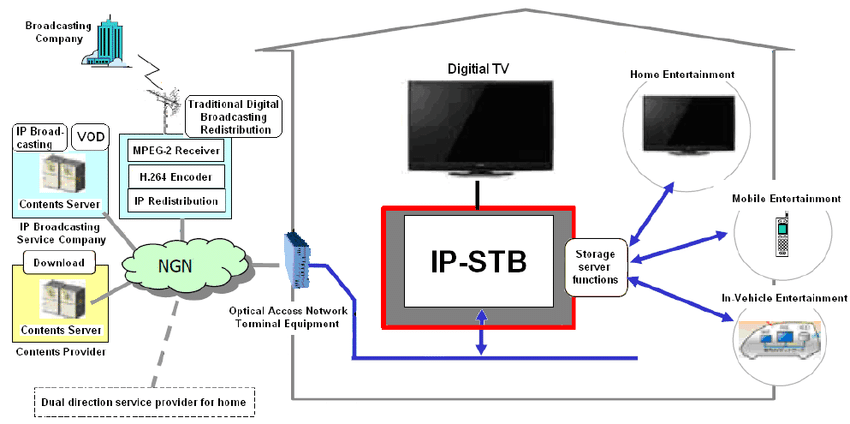Triple play, or “三网融合” in Chinese, refers to the integration of three major types of networks: telecommunications (telephony), cable television (CATV), and the Internet. The convergence of these networks allows for the delivery of multiple services (voice, video, and data) over a single infrastructure. The theoretical basis of data communication in triple play involves several key concepts in network engineering and communication systems.
1. Multiplexing and Modulation
- Multiplexing allows multiple signals (voice, video, data) to be transmitted over a single communication channel simultaneously. For triple play services, different types of multiplexing are applied, such as time-division multiplexing (TDM), frequency-division multiplexing (FDM), and wavelength-division multiplexing (WDM). These methods ensure efficient bandwidth usage, which is crucial in a unified infrastructure for delivering multiple services.
- Modulation is essential for transmitting data across different mediums. Techniques like QAM (Quadrature Amplitude Modulation) are widely used in CATV and broadband communication to encode the information onto a carrier wave for long-distance transmission with high efficiency and low error rates.
2. Packet-Switched Networks (IP-based Communication)
The Internet protocol (IP) forms the backbone of data transmission in triple play. Unlike circuit-switched networks (used in traditional telephony), packet-switched networks divide data into smaller packets that are routed independently across the network and reassembled at the destination. This method is highly efficient for multimedia applications, as it allows different types of data—voice, video, and internet data—to share the same infrastructure.
- IPTV (Internet Protocol Television) and VoIP (Voice over IP) are examples of applications that rely on IP-based communication for delivering video and voice services, respectively.
3. Quality of Service (QoS)
To provide a seamless experience across multiple services, ensuring high Quality of Service (QoS) is essential. QoS mechanisms are designed to prioritize different types of traffic (e.g., prioritizing voice over general data) to minimize latency, jitter, and packet loss. In a triple play network, QoS is crucial for real-time services like voice and video that are sensitive to delays and require smooth, continuous data flows.
- Technologies like Differentiated Services (DiffServ) and Integrated Services (IntServ) are used to manage bandwidth and ensure that critical services maintain a high level of performance.
4. Network Protocols and Standards
A variety of protocols and standards enable communication across different services in a triple play architecture:
- DOCSIS (Data Over Cable Service Interface Specification) is a standard that defines high-speed data transmission over cable television networks. It enables internet access and voice services to be delivered over the same CATV infrastructure.
- IP Multimedia Subsystem (IMS) is a standardized architecture that supports multimedia services over IP networks, ensuring the interoperability of voice, video, and data services.
5. Broadband Access Technologies
Broadband access technologies form the foundation for delivering triple play services. These include:
- Fiber to the Home (FTTH) and Fiber to the Building (FTTB) technologies that use optical fiber to provide high-speed data transmission directly to end users.
- xDSL (Digital Subscriber Line) and Cable Broadband technologies are used to deliver high-speed internet over traditional telephone lines and cable television networks, respectively.
6. Convergence of Services and Devices
The convergence of voice, video, and data services over a single network requires seamless integration of hardware and software. Unified Communication Platforms and Set-Top Boxes (STBs) are essential components in the user’s home or business environment to combine these services.
- Modern home gateways and STBs often incorporate multiple interfaces (Ethernet, Wi-Fi, HDMI) to manage and deliver triple play services through a single point.
In summary, the theoretical foundation of triple play’s data communication lies in the convergence of network technologies, efficient data transmission methods (multiplexing and modulation), packet-switching protocols, QoS management, and broadband access technologies. These elements together enable the simultaneous delivery of voice, video, and data services over a unified infrastructure.










